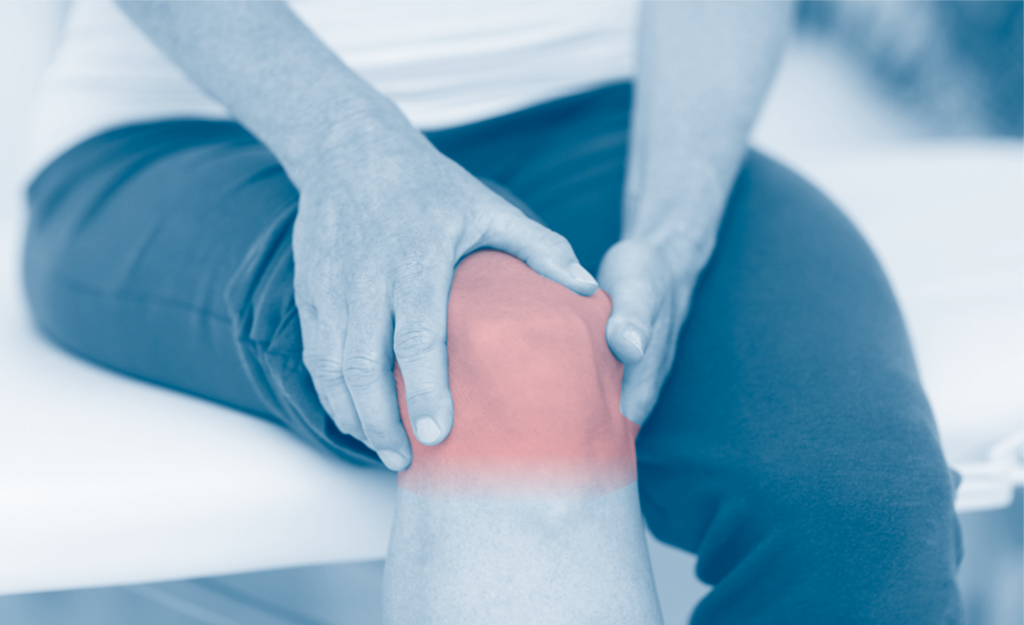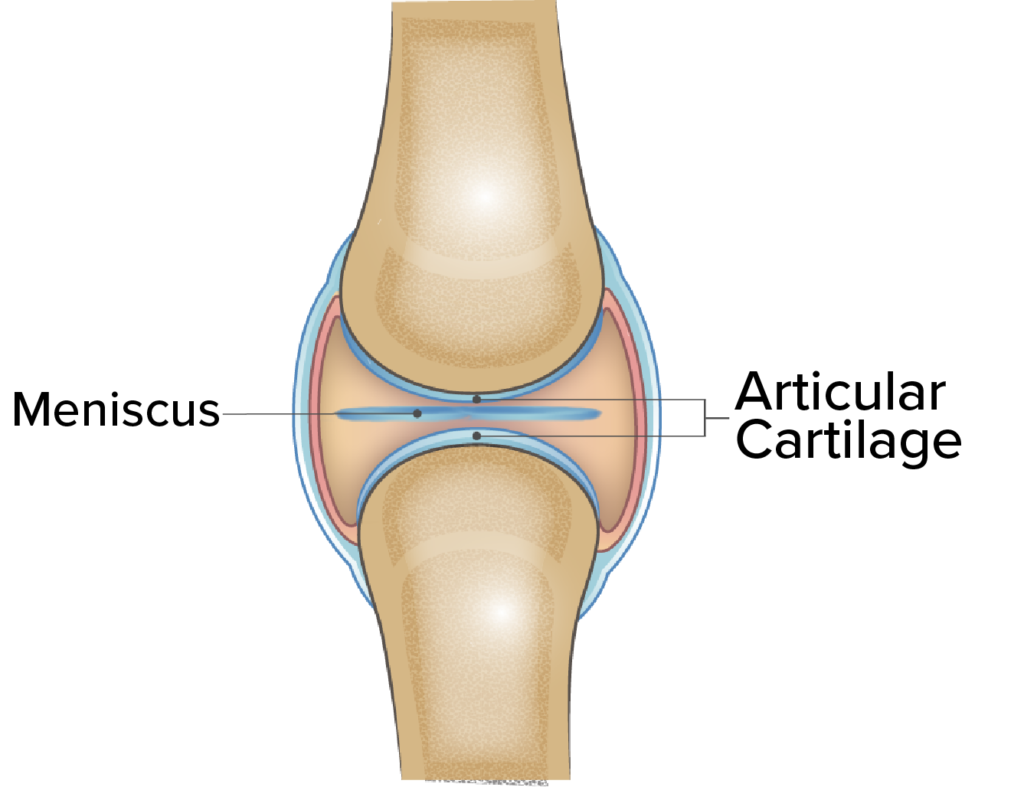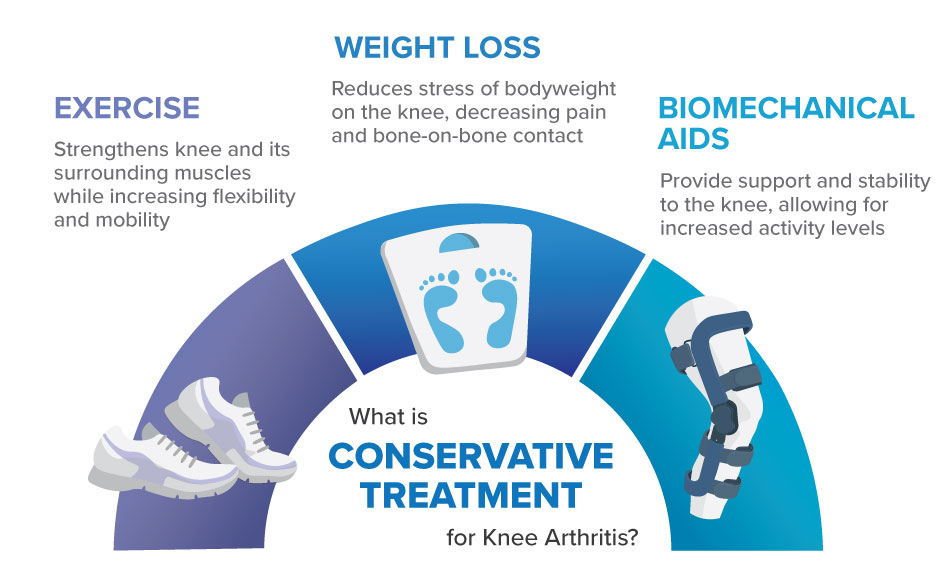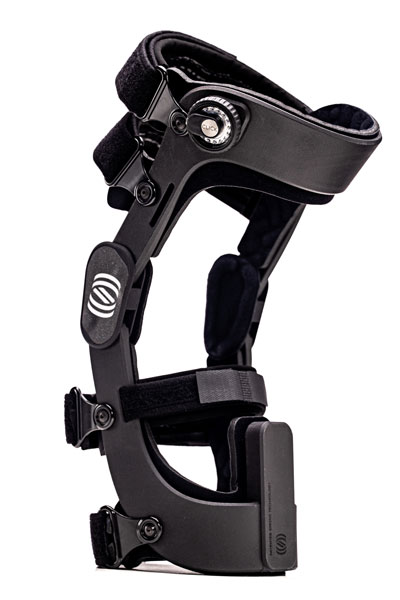Bone on Bone Knee Pain – What You Need to Know

Has your doctor told you that your knee is bone on bone? What does this mean? We will break it down for you and give you some information on your options for managing bone on bone knee pain.
What is Bone on Bone Knee Pain?
So your doctor has delivered you the news that your knee pain is due to

Inside a healthy knee, between the bones, there is soft spongy tissue called cartilage. Cartilage comes in two types hyaline and articular. The former is what your meniscus is made out of. This tissue is your knees natural shock absorber – you have one on the right side of the knee and one on the left. Articular cartilage covers the surface of the bones. It is smooth and viscous allowing the surfaces of the joint to slide over one another with minimal friction.
A loss of cartilage in the knee decreases the shock-absorbing capability of the joint, and creates more internal friction whenever you move it. This is the primary driver of degenerative joint disease (osteoarthritis). As your joint tissue degrades, inflammatory processes increase and more pressure is placed directly onto the bones. Pain becomes more common during simple activities like walking or rising from a chair. Eventually, the bone on bone pressure causes the growth of bone spurs. These lumps of bony excess cause further discomfort and stiffness within your joint.
Can I Regrow My Knee Cartilage?

Is it possible to reverse knee osteoarthritis? This is a common question for those with significant bone on bone knee pain. Unfortunately, efforts to regrow knee cartilage have had limited success. Out of the available regenerative options, stem cell therapy remains the most promising. However, these treatments are not currently FDA approved so you should be wary whilst considering these treatments.1 When the pain gets unbearable most opt for full knee replacement surgery. During surgery, the entire surface of the joint is resurfaced with artificial materials. Last year just shy of 1 million Americans underwent knee replacement surgery and that number is expected to grow.2
Bone on Bone Knee Pain Treatments
Knee surgery can be a daunting prospect for many. If you are looking for alternatives to manage your pain you are not alone. Other possible options range from
Painkillers and Injections
The major benefit of using oral painkilling drugs is that they can provide near instant pain relief. Injections provide a similar longer lasting effect but may take several weeks to kick in. Overreliance on these treatments can be detrimental. Some scientists suggest that artificially decreasing knee pain may increase cartilage loss in the long run.4
Weight Loss & Exercise
DID YOU KNOW?
10lbs of weight lost equates to 48000 lbs less compressive load on your knee per mile walked!5

Weight loss and exercise are considered to be the gold standard treatment approaches for osteoarthritis. Consider your muscles as the shock absorbing system of your body – Strengthen them and your knees may become more resilient during physical activity. Weight loss decreases the total load placed on your knees at all times. Losing a large amount of body weight will help preserve what knee cartilage you have left. Even if you are at an advanced stage of osteoarthritis – Less body weight means less bone on bone pain.
Knee Braces, Walkers & Canes
While weight loss and exercise can provide great bone on bone knee pain relief, it’s not an instant solution. It

There are many challenges that come with a commitment to long term lifestyle changes. This can make it difficult to chip away at that bone on bone knee pain. External supports like canes, walkers can help support you instantly when you need it most. They allow you to completely offload all three areas of your knee joint. But not everyone wants to be restricted by canes and walkers. Luckily there are other solutions that provide a similar benefit.
Tri-compartment offloading knee braces are not dissimilar from an exoskeleton. A recent study showed that these braces are able to reduce joint contact forces in the knee by over 40%7. That means less bone on bone pressure and less pain.

What’s Next?
Are you interested in learning more about how to manage your knee arthritis without painkilling drugs and surgeries? Check out this article on knee braces designed specifically for arthritis.
Additional Reading
References
- Cost of Stem Cell Treatments. Retrieved from: https://bioinformant.com/cost-of-stem-cell-therapy/
- Total Knee Replacement Statisitics. Retrieved from: https://idataresearch.com/total-knee-replacement-statistics-2017-younger-patients-driving-growth/
- W. Zhang et al., OARSI recommendations for the management of hip and knee osteoarthritis, Part II: OARSI evidence-based, expert consensus guidelines. Osteoarthritis and Cartilage, 2008.
- J. M. E. C. (2012). Analgesics for Osteoarthritis. In Comparative Effectiveness Review Summary Guides for Clinicians [Internet]. Agency for Healthcare Research and Quality (Us).
- Why weight matters when it comes to joint pain. Retrieved from:https://www.health.harvard.edu/pain/why-weight-matters-when-it-comes-to-joint-pain
- Grodstein, F., Levine, R., Troy, L., Spencer, T., Colditz, G. A., & Stampfer, M. J. (1996). Three-year follow-up of participants in a commercial weight loss program: can you keep it off?. Archives of Internal Medicine, 156(12), 1302-1306.
- McGibbon, C. & Mohamed, A. Knee Load Reduction From an Energy Storing Mechanical Brace. Canadian Society for Biomechanics (2018)
Frequently Asked Questions
Bone on bone knee pain occurs when cartilage in the knee joint degenerates and the exposed bones rub against each other.
You may have bone on bone knee pain if you experience knee pain while weight bearing or you have degenerative joint disease (osteoarthritis) or bone spurs.
Treatments for bone on bone knee pain range from conservative treatments, such as exercise and bracing, to painkillers, and knee replacement surgery. Typically, multiple treatments are combined to treat bone on bone knee pain.